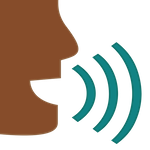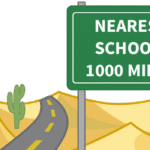Last week I was on a webconference that examined the internet access gap. I was struck by one district administrator’s story: For weeks, thousands of students had been diligently mailing in the packets of work they’d been assigned. All of those packets went into boxes. The boxes piled up in a room. The boxes were never opened. No one had the time to read the packets. No one made the time to read them.
This experience is not unique. It is happening across the country. As an educator, it shames me.
Why the Gap is Widening
So how are English Learners faring in today’s COVID-19 distance learning context? We don’t need to wait for the next research study to figure out the answer: not so great. Beyond the economic dislocations, threats to their communities, social isolation, and many other stresses, English Learners are losing the very thing they need the most (academically): the language of content. Let’s look at the traditional four domains of language:
 Listening: Only one-fifth of 477 districts surveyed required live video classes during the COVID quarter this spring. Even among those that have live classes, many students did not attend them. One top-20 district administrator told me they had a 50% attendance rate. And among those students who attended live video classes, the amount of content-related communication is simply lower than in the classroom. How do I know this? Because I have not heard of a single school district doing 6 hours of live video. And even if that miracle happened, students and adults alike are simply unable to fully sustain their attention during videoconferences for such periods of time. So, no, students are definitely not getting anywhere close to the volume of listening they formerly received when they were physically in a classroom. And this is not helpful for English Learners.
Listening: Only one-fifth of 477 districts surveyed required live video classes during the COVID quarter this spring. Even among those that have live classes, many students did not attend them. One top-20 district administrator told me they had a 50% attendance rate. And among those students who attended live video classes, the amount of content-related communication is simply lower than in the classroom. How do I know this? Because I have not heard of a single school district doing 6 hours of live video. And even if that miracle happened, students and adults alike are simply unable to fully sustain their attention during videoconferences for such periods of time. So, no, students are definitely not getting anywhere close to the volume of listening they formerly received when they were physically in a classroom. And this is not helpful for English Learners.
 Speaking: If listening has taken a hit during the pandemic, speaking has taken an even greater hit. Even if you are in a district doing live video classes, you simply cannot host a class with 25 unmuted audio lines. And if a student is muted, she or he is not speaking. So a student needs to take more initiative to speak, minus many of the visual cues to see how speech is received, minus the realtime response from others (due to audio lag, muting, and other factors)— and within a more compressed timeframe than standard classes.
Speaking: If listening has taken a hit during the pandemic, speaking has taken an even greater hit. Even if you are in a district doing live video classes, you simply cannot host a class with 25 unmuted audio lines. And if a student is muted, she or he is not speaking. So a student needs to take more initiative to speak, minus many of the visual cues to see how speech is received, minus the realtime response from others (due to audio lag, muting, and other factors)— and within a more compressed timeframe than standard classes.
 Reading: Reading might seem to require the least teacher interaction, particularly at higher grade levels. And yet students classified as English Learners are inherently lacking foundational reading skills and knowledge. These include word recognition, decoding, morphology, sentence processing, academic vocabulary, and processing speed.English Learners require some level of additional support in each of these areas beyond what a packet of worksheets and reading materials can reasonably deliver. There are many wonderful technology-based reading products for learning to read. But English Learners in upper elementary and middle grades are in a position where they mainly need to read to learn. Where do they get help with reading in math and science?
Reading: Reading might seem to require the least teacher interaction, particularly at higher grade levels. And yet students classified as English Learners are inherently lacking foundational reading skills and knowledge. These include word recognition, decoding, morphology, sentence processing, academic vocabulary, and processing speed.English Learners require some level of additional support in each of these areas beyond what a packet of worksheets and reading materials can reasonably deliver. There are many wonderful technology-based reading products for learning to read. But English Learners in upper elementary and middle grades are in a position where they mainly need to read to learn. Where do they get help with reading in math and science?
 Writing: Well, at least there’s writing. After all, students have to do some amount of writing in just about any homework assignment, COVID or no COVID. So they don’t need as much writing help, right? Sadly, no. Writing is also threatened. Why? Students are missing guidance and feedback on writing. If packets are sitting in unopened boxes, students are not getting feedback on their writing. Without feedback, they are not improving. Furthermore, even the 20% of students getting live video classes are still missing much of the classroom discussion and debates about writing. Worst of all, if a student’s hard work ends up in an opened box and she or he has no audience, what do you suppose happens to student motivation?
Writing: Well, at least there’s writing. After all, students have to do some amount of writing in just about any homework assignment, COVID or no COVID. So they don’t need as much writing help, right? Sadly, no. Writing is also threatened. Why? Students are missing guidance and feedback on writing. If packets are sitting in unopened boxes, students are not getting feedback on their writing. Without feedback, they are not improving. Furthermore, even the 20% of students getting live video classes are still missing much of the classroom discussion and debates about writing. Worst of all, if a student’s hard work ends up in an opened box and she or he has no audience, what do you suppose happens to student motivation?
How to Address the Gap
One way is to push language into the content areas. That’s what we do at Speak Agent. We integrate listening, speaking, reading, writing, and interactivity into your math and science courses from kindergarten up to middle grades. My next post tackles each of the language domains and highlight specific examples of how Speak Agent is helping to fight the “COVID slide” for English Learners.
Of course the academic language gap is not unique to English Learners. It is very much real for many students who receive free and reduced price meals; students with trauma; students with special needs; students who struggle with reading; students who have been marginalized due to race, language, or country of origin — actually, it affects most students.




